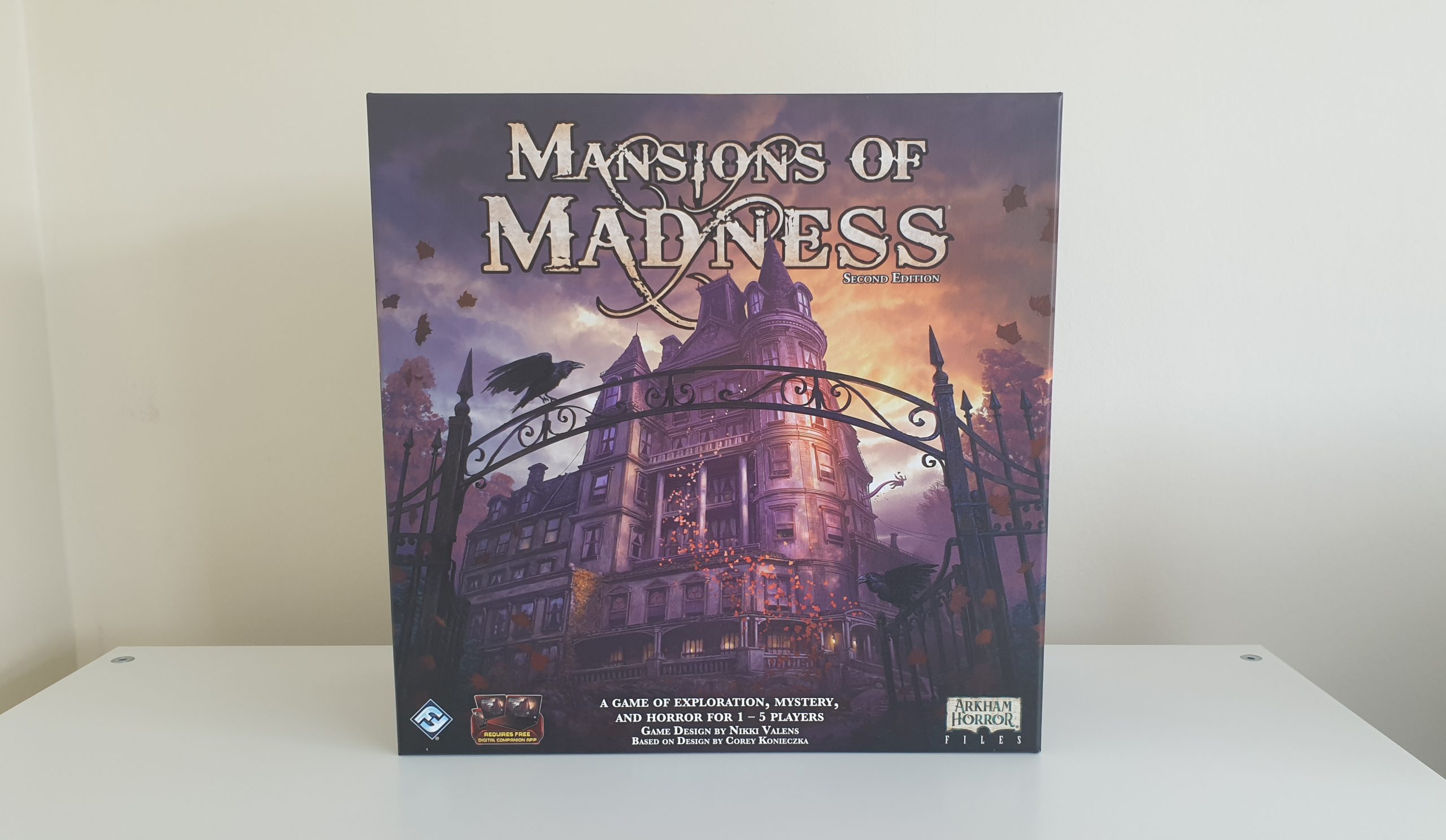Mansions of Madness: Second Edition is an app driven, horror filled, adventure board game from designer Nikki Valens and publisher Fantasy Flight Games. Based in the same Cthulhu themed universe as Arkham Horror and Elder Sign, Mansions of Madness sees 1 – 5 players exploring a modular board, rolling dice for checks and attempting to survive untold horrors. With four adventures available using the free app, the investigators will have to overcome monsters and mysteries. However, is there fun to be had amidst the horrors and does the app help or hinder the experience? Let’s find out!
From offices in an Arkham Mansion to the creaking piers off Innsmouth, each player will take up the role of 1 of 8 investigators. Coming with their own stats, and either a passive ability or a special action they can perform, each is unique. After choosing whom to be the player takes the miniature for the investigator and their character card. All other investigators and character cards can be returned to the box, while all monsters, tokens, item/spell decks and map tiles are to be placed within reach.
Booting up the Mansions of Madness app players select one of the four available scenarios, with the base game content. At the main menu players can inform the game which expansions they have, enabling other scenarios to be playable. Upon choosing a scenario players then input which of the investigators are being used. The app will then instruct players what the party’s starting items, spells and token are, which vary with each playthrough. Players can freely discuss which items which character should have, passing them out accordingly.
The adventure then truly begins, with a voiced prologue. Setting the scene, the app then shows the starting room, with a variety of points of interest. These range from places to search to doors to open or even alleys to peer down. Note that aside from getting the components out of the box this is there is no real setup. The starting board layout is unknown until this point. Spending actions to trigger exploration actions, open doors etc. players will over time expand the map – with both large and small map tiles being added. Which tiles are used is driven by the app, so what is through the lobby door in one playthrough may not be next time. When new tiles are placed new tokens are added to the board, again where is denoted by the app. This can see items players need to search for spawning in completely different locations, meaning no two experiences will be the same.
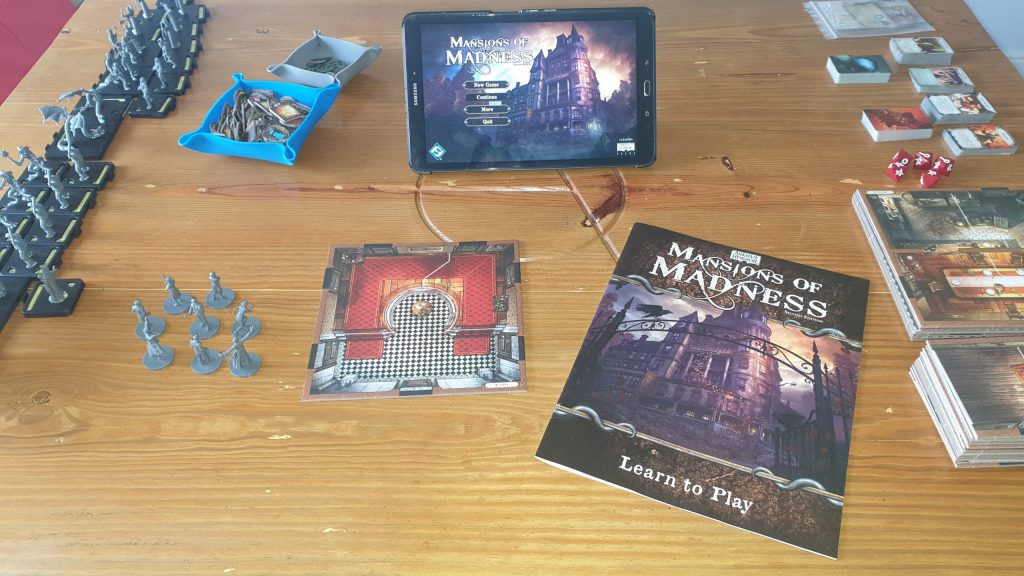
Once all players have had a turn, performing two actions, the game – or the mansion – fights back. The Mythos phase has three parts to it, an event, monster activation and then horror checks. Aside from when going into new rooms monsters may spawn during the event phase, though this can also see negative effects applied to the investigators. Monsters then activate, moving and attacking investigators. The final step of each Mythos phase is for investigators in range of a monster to do a horror check, to see if they suffer reduced sanity from the horrific monster that they can see. The majority of this phase is driven by the app, randomising what occurs.
From strength checks for opening stiff crates through to attacking or dodging damage from monsters, players will have to roll the dice to do checks. Coming with only 3 different faces, the results are either successes, clue symbols (which by spending clue tokens can be converted to successes) or blank faces. As an example, bats may attack an investigator. This event may test an investigator’s agility, to see if they can avoid the attack. If playing as Ming Thi Phan the player sees they have 4 agility, thus they would roll 4 dice. Summing the success symbols rolled they would refer to the app to see if they passed the check, avoiding the damage, or were unable to.
The unraveling mystery of each story is something that drives players to explore. At the offset of the game, players only have a few pieces of information to go on. Plus, most of the final map is far from on the table in front of them and they won’t have the items necessary. Some might not like that the overall objective is hidden from them. Nevertheless, this only increases the importance of each piece of additional narrative. At some point the objective will surface, and completing it sees the investigators cooperatively win.
Investigators don’t always win. Monsters and more can see players take damage or horror, affecting their health and sanity. These cards are often taken face up, that can trigger more than just 1 damage – coming with ongoing negative effects. When an investigator has taken damage or horror equal to their health or sanity values respectively they are not eliminated, instead taking a wounded or insanity card. When an investigator hits that limit a second time they are eliminated, leaving the remaining investigators one turn to complete the scenario. Going insane also often tweaks a player’s win condition, perhaps making them want to start a fire, see a player wounded or more. For those whom dislike mental illnesses being wrongfully portrayed this will therefore not be a game for you.
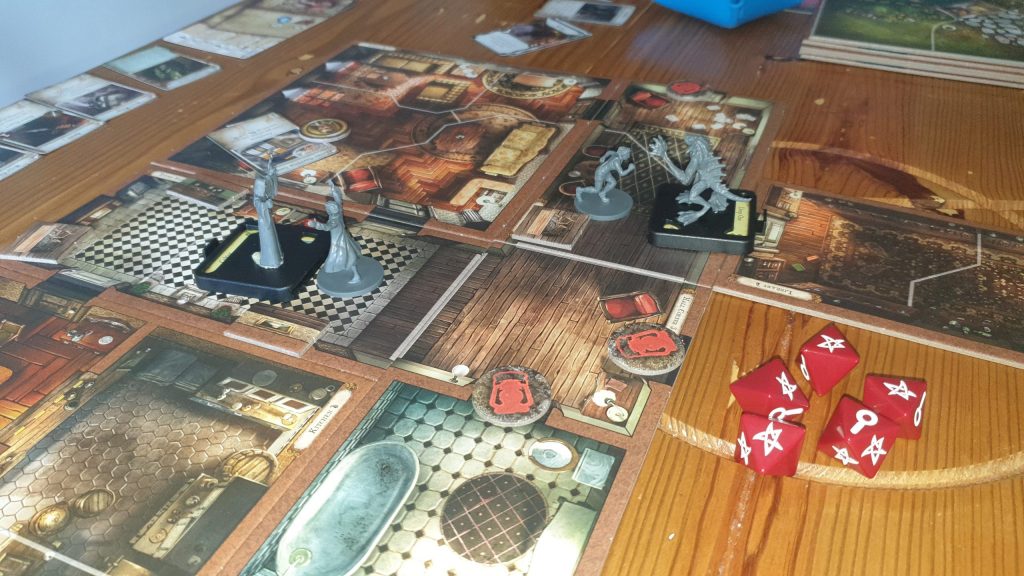
The way the board grows over time is part of the mystery, though it doesn’t help for table setup. Often players will have to carefully push the components in play about to allow for a new stretching corridor. This fiddliness is a small price to pay for not knowing what is on the other side of doors. It keeps the suspense there, when showing even the outline of the mansion could give details away of which direction to head towards.
While the mansion and the monsters that spawn are against the players, the dice never quite feel that way. There are many times not enough successes will be rolled to pass a test or check, yet being able to roll to negate damage allows the dice to feel like they are on your side. Due to an event or an attack your character is going to take X damage or horror but a good dice roll could save you. It is a small switch around but it changes the dice causing the problems to helping to keep the problems at bay.
Utilizing the app occasionally for puzzles introduces an element that could not have been replicated via normal board game components – at least without having to destroy components. It also allows the same puzzles from one playthrough to the next to be different, using a different combination or puzzle style. For replayability this is therefore a great thing, though it would have been even better if more than three puzzle styles had been implemented. These puzzles are completely app driven, keeping players eyes locked to the screen rather than the board. For those still on the fence about apps in board games this might be a step too far, as these minor sections are just like puzzle apps that can be downloaded.
On top of making what occurs randomised, having the app run everything removes the need for a dungeon master. All players are able to jump in and play the experience together, rather than having a dedicated player to run things. As much as the app draws players attention away from the board game components, making the miniatures even less necessary, this is a huge plus point for Mansions of Madness. I would note that we have used a medium sized tablet to run the app during play. Attempting to play utilizing a phone screen would make the user interface more fiddly.
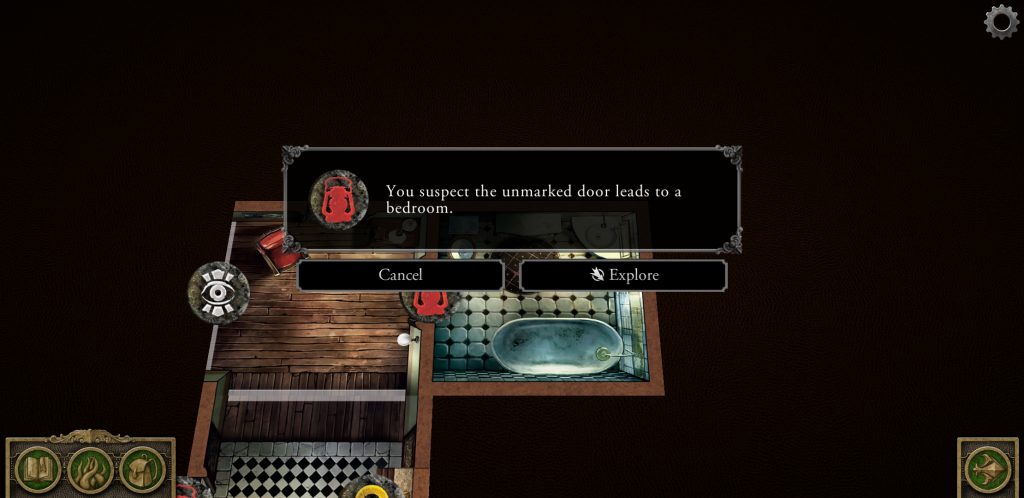
The four included scenarios offer many many hours of gameplay, before any are replayed. Alas, is it a shame that there isn’t a user generated content feature built into the app. From a profit standpoint it does encourage players to buy the DLC storylines, which only require the base game, or purchase expansion content. Still, it could allow Fantasy Flight to sell the game as coming with a richer amount of content.
Some gamers love to get hands on with miniatures, from painting them to gluing them together and others don’t. As one of the latter group, due to incredibly poor painting skills, it is a shame that Mansions of Madness’ miniatures need to be glued to their bases. Each comes with their own token that slides into the base. The artwork that adorns these tokens is therefore hidden. On top of this, not all of the stats needed are instantly visible – with monsters brawn on the underneath side. It may be due to the way companies like CMON have produced miniatures of such amazing quality over the past few years, but this almost makes Mansions of Madness show a sign of age. They certainly aren’t like that in Fantasy Flight’s new game The Lord of the Rings: Journeys in Middle-earth.
Mansions of Madness: Second Edition comes with 5 dice, which just isn’t enough. Some characters have a stat value of 5, which would see all 5 dice rolled. There are events though that have stat +1 checks, and item cards available that give dice bonuses. Therefore, an individual check could see 7 dice needing to be rolled. Making this worse, at times more than 1 player will need to roll for a horror check – so the dice are constantly having to be passed around the table. For such an expensive game, enough dice should be included for all players to use.
Being both time saving and time sink are the alphabetical decks. During play this is ideal at not slowing the game down, hunting for a card, as it’ll be in the indicated deck in alphabetical order. As you may assume, cards will have to be put back in the right order for things to be as smooth in future games. This lengthening of the tear down time is well worth it for the reduced moments of pausing during the game, as it helps keep players immersed in the experience – still it does mean packing away is a bit of a pain.
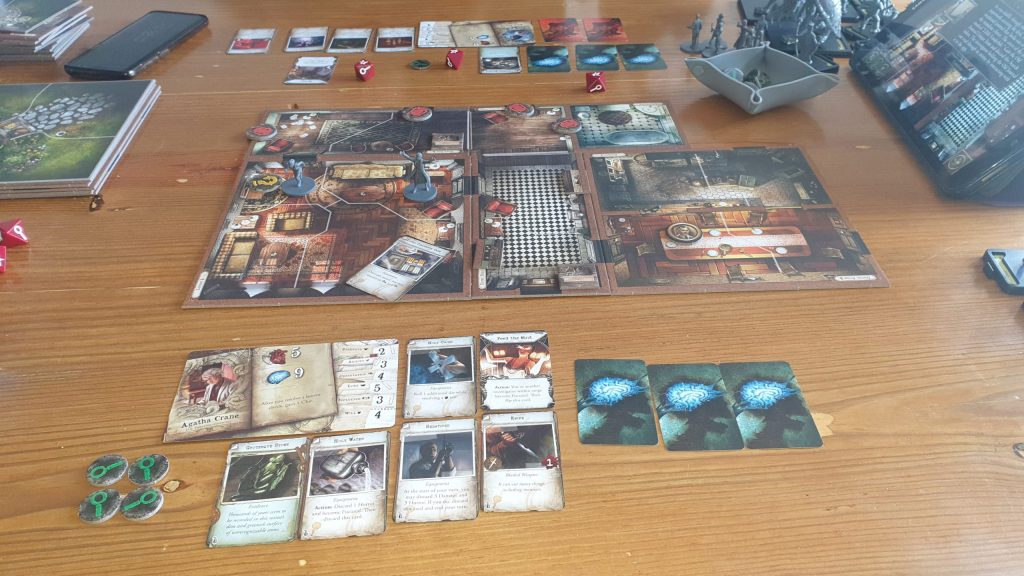
Could Mansions of Madness be an app only title with a few minor tweaks? The simple answer is yes. For some this will be an instant red flag, with board gaming becoming popular as an analogue alternative. There are parts that work well not being on the app though. Rolling the dice and seeing the results, rather than just tapping to roll digital dice is an experience players can invest a lot more into. Plus, whilst monster actions are driven by the app, monsters are not shown on the board in the app once spawned – which helps maintain players need to look at the physical components.
The mystery and unknown of the adventures is what will grab players though, and Mansions of Madness’ app only helps step that up to another level. The core game aside, other games could benefit from a voiced scene setting prologue. Despite being out for a good few years Mansions of Madness isn’t cheap, and perhaps that is due to the unnecessary miniatures. Though, there is plenty of hours and replayable content waiting to be experienced, which can provide immense satisfaction to complete and edge of the seat tension.
(Editor’s Note: Mansions of Madness was provided to us by Asmodee for the review. The game is currently available from local board game stores, some of which are running dropoff services, find your local store here.)

